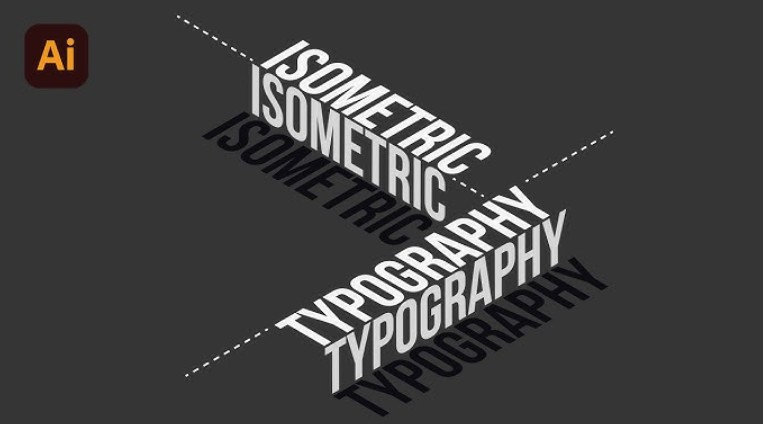Best Selling Products
Negative Space in Photography: The Secret to Creating Stunning Photos
Nội dung
- 1. What is Negative Space? Definition and Importance
- 2. Common Types of Negative Space
- 3. Benefits of Using Negative Space in Photography
- 4. Techniques for Using Negative Space Effectively
- 5. Illustrative Examples of Effective Use of Negative Space
- 6. Practical Tips for Mastering Negative Space
- 7. Conclusion
Learn about negative space in photography, an important element that creates balance and uniqueness in your photos. Discover how to use negative space effectively to enhance your work.

Negative space in photography is an important element that cannot be ignored when you want to create unique and artistic photos. Instead of just focusing on the main objects, negative space helps create balance, highlight details and contribute to bringing a new feeling to the viewer. In this article, sadesign will help you better understand the role of negative space in photography, as well as how to take advantage of it to create beautiful and impressive works.
1. What is Negative Space? Definition and Importance
Negative space, also known as negative space, is the area around and between the main objects (subjects) in a photograph. It is the “non-subject” part, including sky, water, walls, or any other empty areas in the frame.
.jpg)
It encompasses the location, distance, depth, and direction of sound sources as they are emitted, creating a realistic and immersive listening experience. Acoustic space plays an important role in enhancing sound quality in applications such as music production, sound system design, and virtual reality technology. Understanding and optimizing acoustic space improves the ability to convey emotions, increase engagement, and bring maximum satisfaction to the listener.
The Importance of Negative Space:
Negative space is not simply the “rest” of a photograph, but plays a vital role in creating a powerful and effective photographic composition:
Creating Focus for the Subject: The space around the subject helps draw the viewer's attention to the main object, highlighting its shape, size, and details. Negative space plays an important role in creating depth and balance for any work of art or design, especially in the fields of music, architecture, and interior design. Using negative space appropriately not only helps highlight the main subject but also creates overall harmony, attracting the attention of the audience. The coordination between sound, light, and spatial layout elements can bring a strong emotional experience, while affirming the aesthetic value and professionalism of the work. Therefore, researching and applying negative space scientifically is an indispensable factor in the process of creation and development.
Creating a Sense of Balance: Negative space plays an important role in creating balance and harmony in design, art, and even everyday life. It is the space between elements, allowing the viewer or listener time to feel, reflect, and connect with the whole. Using negative space appropriately not only enhances aesthetics but also improves the ability to convey messages, avoiding confusion or information overload. In graphic design, architecture, or music, negative space is the key to creating sophistication and professionalism, while bringing a sense of relaxation and comfort to the recipient.
Conveying Emotion and Meaning: The amount and arrangement of negative space can evoke a variety of emotions, from loneliness and silence to vastness and freedom. It can also contribute to conveying the deeper meaning of the image. Negative space plays a key role in conveying the emotion and meaning of a work of art, from music, cinema to speeches or presentations. The appropriate use of negative space not only helps to create depth and vividness for the content but also strongly connects with the emotions of the listener. A piece of music with sophisticated arrangement, a movie with realistic sound or a speech with well-arranged intonation and silence can all evoke deep emotions and leave a lasting impression. Therefore, understanding and effectively exploiting negative space is an important factor in enhancing the quality and impact of any form of communication.
Creating Attractive Compositions: Negative space is an important element in creating creative and unique compositions, making the photo more interesting and attractive. Using negative space properly helps reduce the feeling of confusion, while increasing the aesthetics and effectiveness of conveying the message. Especially in fields such as graphic design, architecture, and art, negative space is the element that creates harmony, professionalism and class. Therefore, understanding and correctly applying the principles of negative space is essential to achieve a complete and attractive composition.
Creating "Breathing Space": The space gives the viewer's eyes a place to rest, avoiding being "suffocated" by too many details, bringing a sense of comfort when enjoying the photo. Creating "breathing space" not only helps reduce the feeling of suffocation but also brings comfort and relaxation to the viewer. This is a necessary factor to optimize the efficiency of space use, while enhancing the beauty of the main elements in the composition. The sophistication in arranging the space can highlight aesthetics, create accents and give other elements the opportunity to "shine". Therefore, understanding and applying the concept of negative space appropriately is an important skill that designers and artists need to master to bring the highest value to their work.
2. Common Types of Negative Space
Negative space in photography is an important element that helps create balance and depth in a photo. This is the empty space around the main subject, usually without much detail, to highlight the subject and create a sense of spaciousness and harmony. Negative space can appear in many different forms in photography:
.jpg)
Sky: A large, simple sky can create strong negative space, highlighting the subject below.
Water Surface: A calm water surface can create a quiet negative space and uniquely reflect the subject's image.
Simple Wall or Background: A plain wall, a colored piece of paper, or a minimalist background can be the ideal negative space to focus entirely on the subject.
Natural Void: The empty areas between tree branches, between buildings, or between objects in a natural setting can also act as negative space.
Negative Space Within a Subject: Sometimes the subject itself contains negative space, such as the space inside a ring, between fingers, or in a hollow structure.
Subtle use of negative space not only helps the viewer focus on the subject, but also conveys a powerful emotion and message. To achieve optimal results, the photographer needs to have a good understanding of composition, light and color, and then combine negative space appropriately with their creative ideas.
3. Benefits of Using Negative Space in Photography
Negative space in photography is an important element that helps create balance and artistry in a photo. Using negative space effectively not only helps highlight the subject but also brings a sense of spaciousness and comfort to the viewer. Actively using negative space in photography brings many significant benefits:
Enhance Focus: Negative space directs the viewer's attention to the main subject, eliminating distracting elements.
Create Minimalism and Elegance: Using lots of negative space can give a minimalist, modern, and elegant feel to a photo.
Evokes Curiosity and Imagination: Sometimes, negative space can create a sense of mystery, encouraging the viewer to think and interpret the meaning of the photo.
Creating a Sense of Motion: Negative space can be used to suggest the direction of a subject's movement, creating a sense of dynamism in an otherwise still image.
Improve Layout: Negative space is an important element in creating a balanced, harmonious and visually appealing layout.
Emphasize Shapes and Lines: The space around your subject helps highlight its unique shapes and lines.
In addition, negative space also acts as a tool to convey emotions, creating depth and sophistication for the work. In particular, it helps the photographer express creative intentions, creating photos that are attractive and impressive. Therefore, understanding and applying negative space properly will help photographers improve their skills and the aesthetic value of their work.
4. Techniques for Using Negative Space Effectively
Negative space in photography is an important element that helps create balance and depth in a photo. This is the empty space around the main subject, used to highlight content and convey a message in a subtle way. To maximize the power of negative space, you can apply some of the following techniques:
.jpg)
Rule of Thirds with Negative Space: Instead of placing your subject at the intersections, place it off to one side or corner of the frame, leaving most of the remaining space as negative space.
Using Leading Lines Combined with Negative Space: Leading lines can guide the viewer's eye to a subject, while the surrounding negative space creates focus and emphasis.
Create Balance With Negative Space: Use negative space to balance other visual elements in the frame, such as bold colors or intricate details.
Fill the Frame With Simple Negative Space: Sometimes, a frame that is almost entirely negative space (for example, a large blue sky) with a small subject can create a powerful effect of loneliness or vastness.
Using Negative Space to Create New Shapes: In some cases, negative space between objects can create a new shape or pattern, giving another layer of meaning to the photo.
Change Your Shot Angle: Experiment with different angles (top down, eye level, bottom up) to change how the negative space interacts with your subject.
Using Shallow Depth of Field: Blurring the background (creating a soft negative space) can help the subject stand out more and create a sense of isolation.
Shoot With Wide Focal Length: Wide angle lenses can capture a large amount of space around the subject, creating more negative space.
Using negative space effectively requires a keen eye for composition, lighting, and choosing the right angle. Some common techniques include using negative space to highlight a subject, using light and shadow to create contrast, or using negative space to evoke a sense of vastness, solitude, or tranquility. By understanding and applying these principles, photographers can create images that are not only visually appealing but also artistically powerful, making a strong impression on viewers.
5. Illustrative Examples of Effective Use of Negative Space
To better understand how negative space is applied in practice, let's look at some examples:
.jpg)
A person standing alone on a vast beach: The sand and vast sky create negative space, emphasizing the smallness and loneliness of man.
A single flower on a white background: The pure white background is negative space, highlighting the delicate beauty and color of the flower.
A bird flying in the blue sky: The vast sky is negative space, creating a sense of freedom and openness, while drawing attention to the bird's movement.
A modern building with many windows against a gray sky: The monotonous gray sky is negative space, highlighting the unique architecture and lines of the building.
A leaf falls on still water: The still water is negative space, creating reflection and a sense of peace.
6. Practical Tips for Mastering Negative Space
To improve your use of negative space in your photography, try these tips:
Active Observation: When looking at a scene, pay attention not only to the subject but also to the space around it. Ask yourself, "What role does this space play in the photo?"
Experimental Shooting: Don't be afraid to shoot multiple versions of the same scene with different compositions, varying the amount of negative space to see the difference in effect.
Use Your Viewfinder Carefully: When composing, think about how the negative space will impact your subject and the overall image.
Go for Simplicity: Sometimes, a simple, minimal background will be the most effective negative space to highlight the subject.
“Breathe” With Negative Space: Think of negative space as “breathing space” for your photo, giving your viewer’s eyes a place to rest and focus on what’s important.
Consider the Purpose of the Photo: The emotion and message you want to convey will influence how you use negative space.
Learn From Other Photographers: Study the work of famous photographers to see how they use negative space creatively and effectively.
Post-Editing: During editing, you can refine negative space by cropping the image or adjusting the brightness and contrast of the blank areas.
7. Conclusion
Negative space is not just empty space, it is an essential element in photography. When used consciously and creatively, it can transform an ordinary photo into a powerful, emotional and engaging work. By understanding the role, benefits and techniques of using negative space, you will have a powerful tool to enhance your photography skills and create more unique and impressive photos. Start observing, experimenting and discovering the hidden power of negative space in every frame you capture.












































